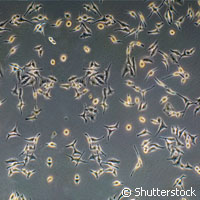Breakthrough technology offers quicker, cheaper cancer screening
Time consuming and expensive cervical cancer screening will become a thing of the past thanks to breakthrough technology developed by EU-funded researchers. Their discovery will allow large-range screening by non-medical personnel with almost immediate results and at a much lower cost than is possible with existing technology. The work is part of the MICROACTIVE ('Automatic detection of disease related molecular cell activity') project, which was funded under the 'Information society technologies' Thematic area of the EU's Sixth Framework Programme to the tune of EUR 1.6 million. Cervical cancer screening is currently carried out via molecular assays that are cumbersome, expensive and time-consuming and require highly trained technicians. The researchers said their breakthrough technology tackles all these drawbacks and promises a revolution in diagnostic instrumentation. They used state-of-the-art micro-fabrication and micro-fluidic technology to create desktop 'laboratories', which offer all the advantages of traditional molecular analysis with none of the disadvantages. MICROACTIVE focused on screening for cervical cancer caused by specific strains of the human papillomavirus virus (HPV). 'It was a good test in that you have a symptom that could be caused by one of seven different viruses, or even two of them, and you want to know which ones,' said Liv Furuberg, researcher with the Nordic research organisation SINTEF and coordinator of the project. She explained that there are over 100 strains of HPV, and the human immune system effectively deals with 97% of them. However, the other 3% are deadly, and so doctors must know the specific strain and whether the virus is active. MICROACTIVE's new laboratories, each of which is about the size of a desktop PC (personal computer), reduces a process that typically takes 20 manual steps down to just 2 and can be carried out by anybody who receives some basic training. There are many possible methods for molecular diagnostics, but MICROACTIVE focused on messenger ribonucleic acid (mRNA) as a marker for an active virus. The current dominant testing technology is cell-based tests, but these return false positives at a rate between 50% and 75%. By testing for specific protein-coding mRNAs, MICROACTIVE avoided the risk of this problem. The test is extremely simple. A cervical smear sample is taken in the usual manner and the sample is added to a mixing agent in a syringe, which is then added to the first 'laboratory' in the process. Here the sample is extracted from the syringe, prepared and applied to a disposable micro-fluidic chip, which allows liquids to be transported at very small scales. Once the sample is prepared, the chip can be transferred to the detection module. The first step in the detection process is nucleic acid sequence based amplification (NASBA), used to create a large number of markers. Next biomarkers - lab-developed molecules that only bind to specific nucleic acid strands - are introduced. 'In our tests we looked at just two different markers, because it was [enough] to prove the concept,' said Furuberg. 'But there are eight channels in our disposable chip, and each channel can test for two viruses at a time, so we could test for up to 16 different markers.' The biggest challenge facing the project was getting a sufficiently high quality sample for amplification. 'We studied every aspect of the process in detail, even before the cervical smear sample was taken, to try and develop the cleanest approach possible, and it was a series of refinements that allowed us to achieve the level of quality required,' explained Dr Furuberg. The team's dedication paid off; in tests against the current gold standards for HPV detection, the MICROACTIVE system performed very well, either matching or exceeding the current state of the art.
Countries
Norway



